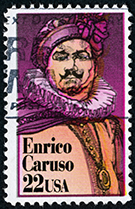The Chemistry of Opera

Most stories involve love, whether it's in dialogue or song. But in opera you can also find chemistry - and not just the "chemistry of love", but literal chemistry.
The storylines of some operas involve poisons, love potions and even pharmacists. A recent article grouped them into four categories related to chemistry.
The first category includes apothecary operas, which involve chemists or pharmacists. Il Campanello, composed by Donizetti in 1836, tells of a wealthy, elderly pharmacist who marries a beautiful young woman. He's kept from their marriage bed by her former fianc', who appears in various guises throughout the night requesting preposterous prescriptions.
The second group of operas involve poisonous natural products. Hamlet, an 1868 French opera by Ambroise Thomas, tells of Hamlet's father being assassinated by his brother, who pours henbane extract into his ear while he sleeps. The plant can cause hallucinations, coma and death.
There are also operas composed about the great poisoners of history, such as Cleopatra. In a 1966 opera, Antony and Cleopatra, by American composer Samuel Barber, Cleopatra tests various poisons on poor or sick people. Although unproven, some say the real Cleopatra killed herself by snake bite or poison.
Finally, there are the arsenic operas. In Simon Boccanegra, an 1857 opera by famed Italian composer Giuseppe Verdi, the title character is poisoned by his future son-in-law.
This connection between chemistry and opera isn't so surprising when you look around and realize all the chemistry in our daily lives, from cleaning products to medicine. We'd venture to say that without chemistry, some opera singers wouldn't have much to sing about!